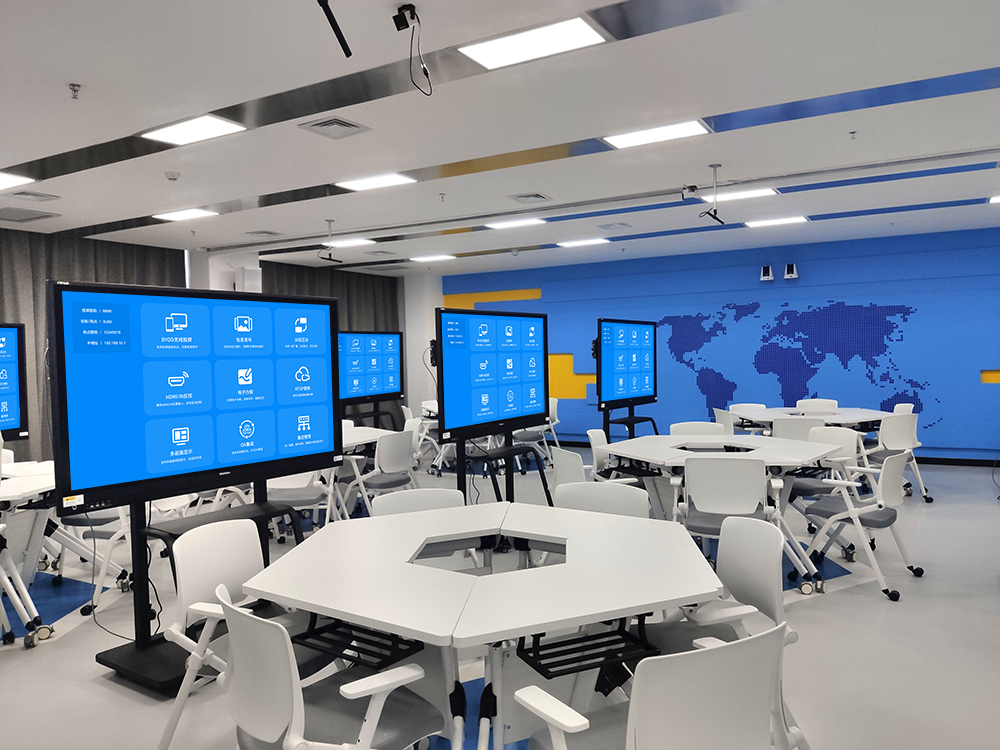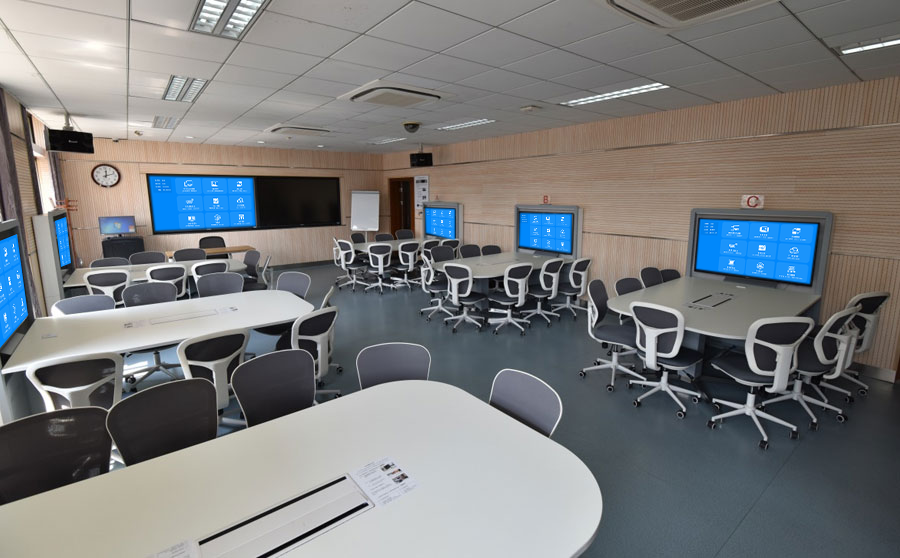Group Collaboration System: A New Tool to Revolutionize Teaching and Collaboration Models
In both education and corporate collaboration, group collaboration is gaining increasing attention as a critical element for sparking diverse thinking and boosting efficiency. An advanced group collaboration system can create an environment of highly efficient interaction and flexible cooperation for teams and students, fundamentally transforming the quality and effectiveness of discussions.
I. Multi-Screen Interaction, Breaking Information Silos
(I) Flexible Grouping and Screen Sharing
Within the group collaboration system, teachers or organizers can quickly divide participants into different groups based on needs, with each group equipped with an independent high-definition display. Whether it’s a classroom group discussion or a corporate brainstorming session, members can use wireless screen mirroring to instantly share materials from their personal devices (phones, tablets, laptops) – such as courseware, research reports, or creative sketches – onto the group screen. This enables rapid information exchange, ensuring discussions start efficiently from the material gathering stage.
(II) Cross-Group Communication and Result Presentation
The system supports inter-group content sharing. When a group achieves significant progress, they can push their screen content to other group screens or the main screen with a single click, allowing all members to compare, analyze, and discuss in depth. For example, in project-based learning at school, different groups’ proposals can be presented simultaneously on the large screen, enabling students and teachers to visually compare the strengths and weaknesses of each, sparking more creativity and thought. In businesses, progress reports from different departments can also be shared this way, facilitating knowledge exchange and collaborative optimization.
II. Wireless Interconnection, Convenient and Efficient Connectivity
(I) Broad Device Compatibility
The group collaboration system is fully compatible with all major operating systems, including Windows, macOS, Android, and iOS. Regardless of the device a member uses, they can easily connect to the system for screen mirroring and sharing. In educational settings, students may use devices from various brands and systems, and the system’s strong compatibility ensures every student can participate smoothly. In businesses, where employee devices are diverse, there’s no need to worry about connection barriers due to device differences, providing great convenience for group discussions.
(II) Simple Operation, Plug-and-Play Casting
Leveraging advanced wireless screen mirroring technology, users can instantly connect their devices to the screen by simply entering a casting code, scanning a QR code, or using the system’s built-in quick connection methods. There’s no need for complex setup or driver installation. Whether a teacher needs to display new material in class on the fly, or a team member in a corporate meeting wants to add a point, they can quickly cast their screen, ensuring the discussion rhythm isn’t interrupted and boosting overall efficiency.
III. Rich Interactive Features, Igniting Creative Thinking
(I) Real-Time Annotation and Collaboration
The system includes powerful electronic whiteboard and annotation functions. During group discussions, members can directly mark up, write, and draw on the mirrored content, highlighting key points, asking questions, and jotting down ideas, making thoughts instantly visible. These annotations are also synced in real-time to all screens within the group, facilitating communication and interaction among members, just like collaborating on a single whiteboard. This effectively promotes brainstorming and in-depth discussion.
(II) Interactive Tools to Boost Participation
To further engage participants, the system is equipped with various interactive tools, such as voting, quick Q&A, and polling functions. In the classroom, teachers can initiate a vote to quickly understand students’ opinions on a particular issue. In corporate meetings, quick Q&A features can ignite employee enthusiasm, livening up the discussion atmosphere. Organizers can also use these features to gather feedback promptly and adjust the discussion direction.
IV. Data Recording and Management, Capturing Discussion Value
(I) Process Recording and Review
The group collaboration system has a full-process recording function, automatically saving each group’s discussion process, including mirrored content, annotation records, and interaction data. After class or a meeting, participants can review the session at any time to summarize lessons learned and inform future improvements. In education, students can deepen their understanding of knowledge by reviewing the discussion process. In businesses, project teams can review discussion processes to optimize project plans and collaboration workflows.
(II) Resource Management and Sharing
All types of materials generated during discussions, such as documents, images, and videos, are automatically categorized and organized into a resource library. Teachers can share excellent group discussion outcomes as teaching resources with other classes, and businesses can archive valuable discussion materials for future project reference. This ensures the retention and transfer of knowledge and experience, preventing each discussion from starting from scratch.
The group collaboration system, through its advantages in multi-screen interaction, wireless interconnection, rich interactive features, and data recording and management, brings new vitality and efficiency to education and corporate collaboration. It is a powerful tool for fostering mutual learning and promoting team innovation, helping all industries achieve higher levels of collaboration and discussion.